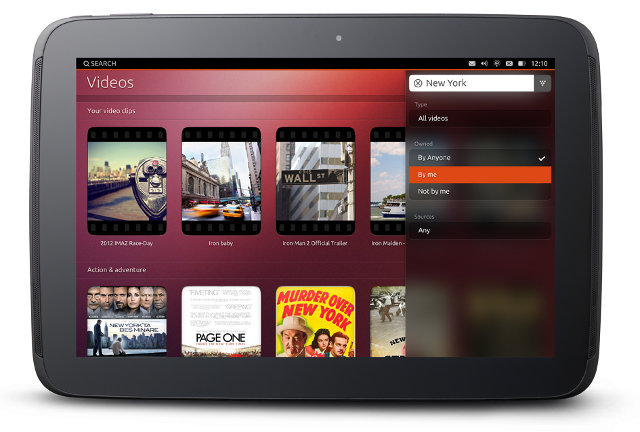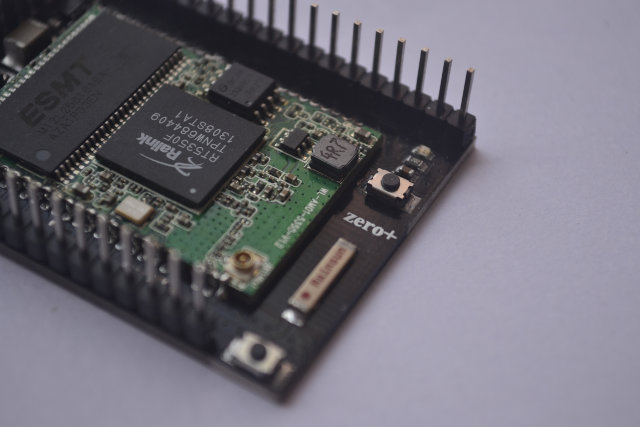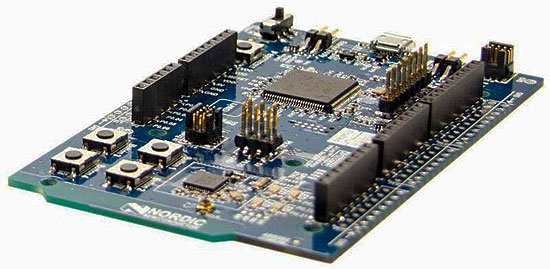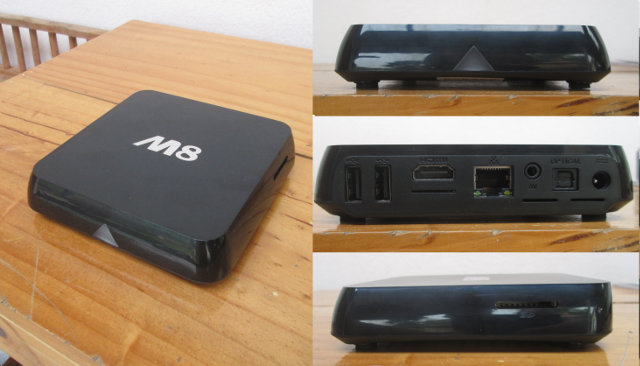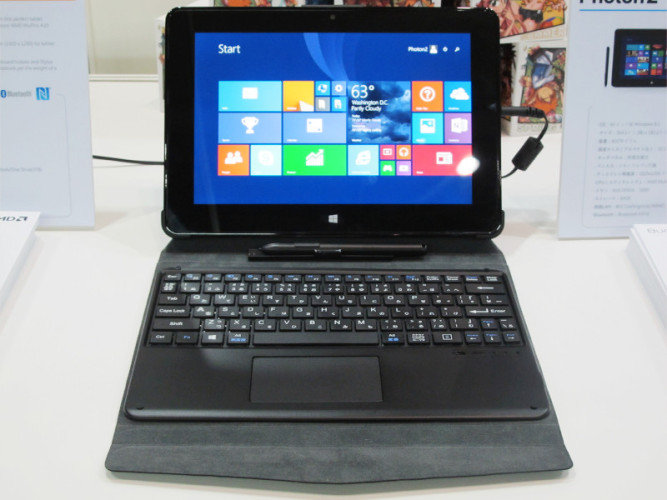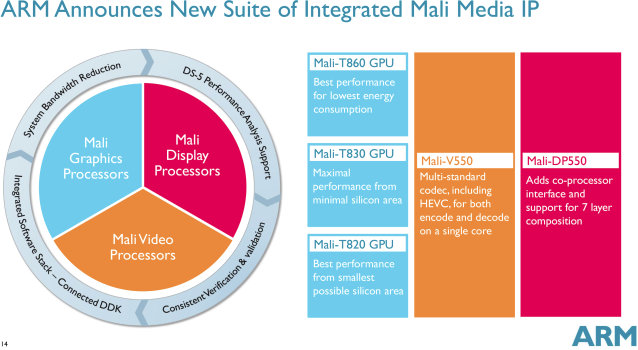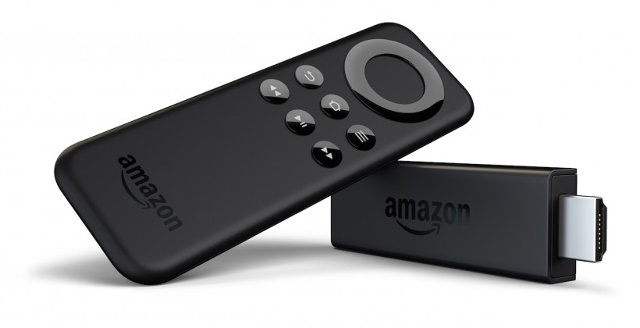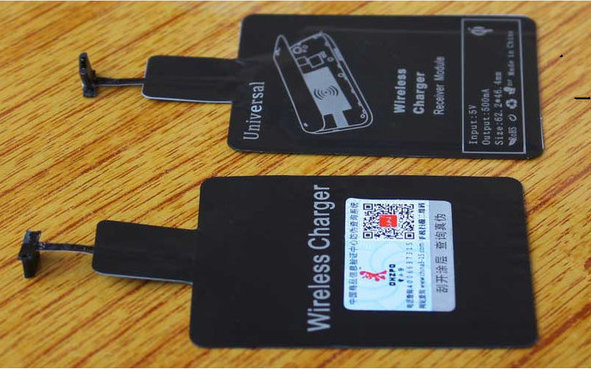Canonical unveiled Ubuntu Touch for Phones & Tablets early 2013, launched an impressive yet failed crowdfunding campaign for Ubuntu Edge smartphone in Summer 2013, and after many more months of development, Ubuntu Touch phones are expected by the end of the year with Ubuntu version of Meizu MX3/MX4 and BQ Aquaris. Ubuntu Touch tablets may be coming soon as Phoronix has been informed of an upcoming UT One tablet powered by Intel Atom Z3735D and running Ubuntu Touch. UT One specifications: SoC – Intel Atom Bay Trail-T Z3735D quad core processor @ 1.33 to 1.5 GHz with Intel HD Graphics Gen 7. System Memory – 2GB DDR3L Storage – 16 GB internal flash + micro SD slot Display – 10.1″ IPS LCD with 1280×800 resolution. 10-point touch screen Video Output – micro HDMI Audio I/O – 3.5mm audio port, HDMI, 2x built-in speakers Connectivity – 802.11 b/g/n Wi-Fi, Bluetooth 4.0 […]
Zero+ IoT Wi-Fi Board is Programmable with Lisp (Crowdfunding)
There have been so many low cost Wi-Fi modules and boards with GPIO headers announced this year, especially on crowdfunding sites, and from the hardware point of view, Zero+ (Zero Plus) board looks very much like many other Ralink RT5350 boards such as Vocore or AsiaRF AWM002, but what makes it different is that it can be programmed with Lisp from a web-based IDE. But let’s go through Zero+ board specifications first: SoC – Ralink/Mediatek RT5350 MIPS processor @ 360MHz with dual band 802.11n Wi-Fi with data Rate up to 150Mbps System Memory – 32 MB RAM Storage – 8MB to 16 MB SPI Flash (for firmware) Expansions Headers – 2x headers with access to I2C, SPI, USB, 2x UART, JTAG, and 14x GPIOs USB – 1x USB host port, 1x micro USB for power Misc – 2x buttons Dimensions – 36 x 25mm (possibly module dimensions only, not full board). I’m […]
Nordic Semi Announces nRF51 DK Arduino Compatible Board, and nRF51 Dongle with Bluetooth Smart, ANT, and 2.4GHz Connectivity
Nordic Semiconductor has introduced two new low cost development boards supporting Bluetooh LE, ANT/ANT+, and proprietary 2.4GHz applications based on their nRF51 series SoCs: nRF51 DK, an Arduino UNO Rev.3 compatible board that can be used for various IoT and wearables applications, and nRF51 Dongle, a USB dongle to connect to a PC or board, which can be useful for packet sniffing and BLE peer connection. nRF51 DK Development Board Key features listed for the board: SoC – Supports nRF51822 (BT/2.4Ghz) and nRF51422 (BT/ANT) SoCs based on an ARM Cortex M0 processor, with 128kB or 256kB flash memory, and 16kB or 32kB RAM. Connectivity Bluetooth Smart, ANT/ANT+ and 2.4GHz proprietary Integrated PCB antenna Connector for RF measurements Expansions Headers Arduino Uno Rev. 3 compatible connector for use with 3rd party shields All I/O and interfaces available via connectors Debugging Segger J-Link OB and ARM CMSIS-DAP Program/Debug supported Support for Program/Debug […]
OpenELEC for M8 TV Box (Amlogic S802) with USB Tuner Support
M8 TV Box is an Android media player based on Amlogic S802 that’s relatively popular. We’ve already seen XBMC Linux ported to M8 device, for people who want a more pure XBMC experience, and automatic frame rate switching, but now OpenELEC Beta 2 is also available for the device thanks to Alex Deryskyba (Codesnake). The firmware image (OpenELEC-Meson8-K200-devel-test build 2.zip) will work on M8 / TM8, and any other Amlogic S802 devices based on K200 board. It is based on OpenELEC 4.1.2 and Linux 3.10, and a beta version, so there may still be some bugs, for example Bluetooth is not working. One very interesting feature is built-in VDR / Tvheadend DVB backends which means you should be able to use one of these USB tuners to watch Live TV from your box via satellite (DVB-S/S2), cable (DVB-C) or digital terrestrial TV (DVB-T2/ATSC) dongle. The zip files contains three files […]
BungBungame Photon2 Tablet Features AMD A10 Micro–6700T Mullins Processor
AMD A10 Micro–6700T is the most powerful AMD Mullins low power processor (4.5W TDP) that competes with quad core Intel Bay Trail-T processors, and even outperforms them in terms of performance, especially GPU performance with Radeon R6 graphics, but possibly not in terms of power consumption. BungBungame Photon2 may be the first tablet to feature this AMD processor, so let’s have a look. BungBungame Photon2 technical specifications: SoC – AMD A10 Micro-6700T quad core APU @ 1.2 to 2.2 GHz. with Integrated AMD Radeon R6 Graphics System Memory – 4GB DDR3L-1333 Storage – 64GB SSD + micro SD card slot up to 128GB Display – 10.1″ touchscreen display, 1920×1200, 16:10 aspect ratio Video Output – Micro HDMI 1.4a Connectivity – 802.11a/b/g/n/ac/MIMO Wi-Fi, Bluetooth 4.0 LE, NFC Camera – 2MP rear and front webcams USB – 1x micro USB 2.0 Battery – 31Wh battery good for 6 to 8 hours usage. […]
ARM Unveils Mali-T800 Series GPUs, Mali-V550 VPU, and Mali-DP550 Display Processor
ARM has just announced several new Mali media IP: three Mali-T800 series GPUs (Mali-T820, Mali-T830, and Mali-T830) based on Midgard architecture, as well as Mali-V500 video accelerator, and the Mali-DP550 display processor. Mali T800 Series GPU The new Mali T-8xx GPUs are based on the same Midgard architecture used in Mali T-6xx and T-7xx GPUs, but deliver better power efficiency thanks to technologies such as ARM Frame Buffer Compression (AFBC), and Adaptive Scalable Texture Compression (ASTC) for imput bandwidth reduction, as well as Transaction Elimination and Smart Composition. ARM provided some performance and energy-comparison between T800 and T600 series (but strangely nothing against T700): The Mali-T820 GPU is optimized for entry-level products, achieving up to 40 percent more performance density compared to the Mali-T622 GPU. The Mali-T830 GPU delivers up to 55 percent more performance than the Mali-T622 GPU. The Mali-T860 GPU provides higher performance and 45 percent more energy-efficiency […]
Amazon Introduces $39 Fire TV Stick to Compete with Chromecast, Roku Streaming Stick
Amazon has decided to put Fire TV media player functionality into a low cost HDMI TV stick called “Fire TV stick” to offer an alternative to the likes of Google Chromecast, and Roku Streaming Stick. The device is based on a Broadcom BCM28155 dual core processor with the same VideoCore IV GPU/VPU found in BCM2835 SoC used in the Raspberry Pi. Fire TV stick hardware specifications: SoC – Broadcom BCM28155 (Capri) dual core ARM Cortex A9 processor @ 1.0 GHz with VideoCore IV GPU/VPU System Memory – 1GB RAM with half reserved to the system, and the other half dedicated to video. Storage – 8 GB internal storage Video / Audio Output – HDMI 1.4b output, w/HDCP 1.4. Resolution: 720p and 1080p up to 60fps Video Codecs – H.264 Audio – AAC-LC, AC3, eAC3 (Dolby Digital Plus), FLAC, MP3, PCM/Wave, Vorbis Connectivity – dual-band/dual-antenna 802.11a/b/g/n Wi-Fi (2×2 MIMO), Bluetooth 3.0 […]
Add Wireless Charging to (Almost) Any Smartphone or Tablet
Flagship mobile devices often come with wireless charging capability, but there’s an easy way to add (Qi) wireless charging to almost any smartphone, or possibly tablet, thanks to wireless charging receivers that simply connect to the micro USB port of your mobile device, and can be purchased for as low as $7 on Aliexpress, Ebay, DX.com, etc… I’ve also seen Adafruit made a Qi Wireless Receiver module for Arduino with a 2.54mm pitch connector. They come in various sizes and shapes, but they’re all extra thin (1 mm), with a micro USB connector oriented upwards or downwards depending on your mode, and a thin cable, that allows you to place it inside your phone between the battery and the phone cover as shown in the picture below. It’s not always possible however, as for example the receiver would cover my phone’s rear camera lens, but you could always attach it […]


